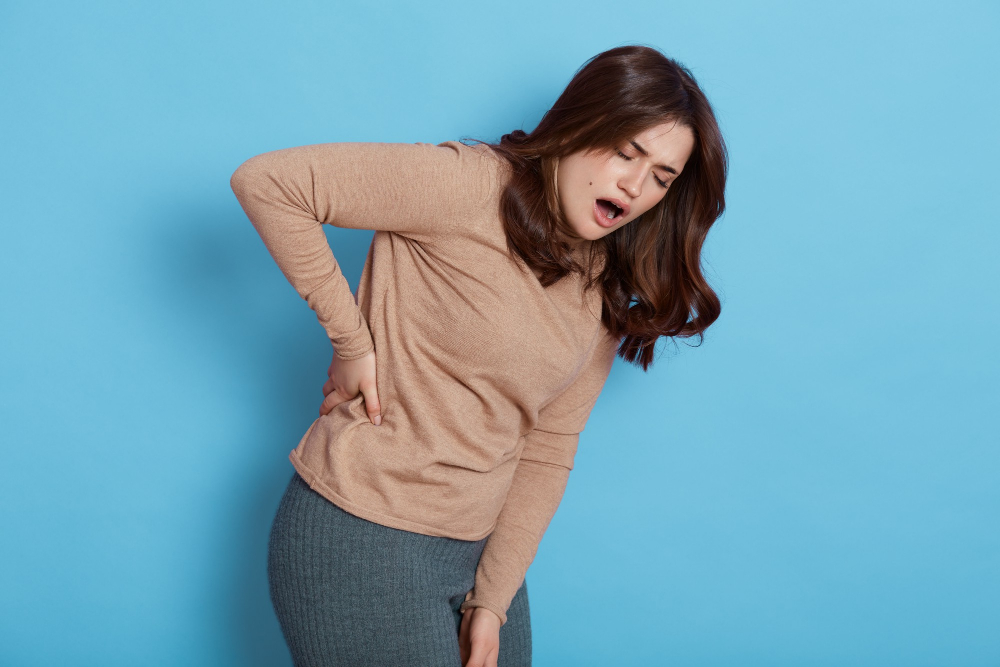We go about our daily lives in the hopes that nothing will interfere with our routines. The slightest hiccups along the way don’t disturb us; we don’t pay attention to them. However, once we experience one health issue, we never seem to be able to handle it well, which makes us stop and suffer.
Back pains are an example of this. We are consumed by it and experience all the discomfort and negative effects it brings. We are unable to focus, much alone perform some physical tasks.
Back pain is a common cause of disability worldwide, and one of the most frequent reasons people visit the doctor or miss work.
Fortunately, you can take action to stop most instances of back discomfort. If prevention is unsuccessful, straightforward self-care and good body mechanics will frequently restore function to your back within a few weeks. Back pain is typically treated without surgery.
First, the symptoms. Back pain might feel like shooting, searing, or stabbing pain in the muscles. Additionally, bending, twisting, lifting, standing, or walking may make the discomfort worse or cause it to spread down your leg.
With home treatment and self-care, your back pain gradually gets better over the course of a few weeks. However, you may want to consult a doctor already when back pain continues to:
- persist for several weeks
- get serious and doesn’t improve with rest
- scatter down one or both legs, particularly if the discomfort is below the knee
- lead to tingling, numbness, or weakness in one or both legs
- come along with unexplained weight loss
Back pain occasionally indicates a serious medical condition. Get professional help right away if your back pain:
- Brings on new bowel or bladder issues
- Has a fever accompanying it
- Occurs after a fall, back injury, or other incidents.
Risk Factors
Back pain can affect anyone, including kids and teenagers. You may be more susceptible to getting back pain if you have these conditions or do the following:
- Improper lifting – Back pain might result when you use your back instead of your legs.
- Mental health issues – Back pain seems to be more common among people who are prone to depression and anxiety.
- Smoking – Back pain is more common among those who smoke. This might happen because smoking makes you cough more, and coughing can cause herniated discs.
- Age – Beginning about age 30 or 40, back pain becomes more prevalent as you age.
- Not enough exercise – Back pain may be caused by underutilized, weak abdominal and back muscles.
- Extra weight Your back is put under more strain if you are overweight.
- Diseases – Back pain can be exacerbated by certain types of cancer and arthritis.
8 Common Causes of Back Pain
Back pain frequently appears out of the blue and cannot be diagnosed by a test or imaging analysis by your doctor. The following conditions are frequently related to back pain:
- Strain on muscles or ligaments – Back muscles and spinal ligaments can be strained by frequent heavy lifting or an abrupt awkward movement. Constant tension on your back can result in excruciating muscle spasms if you’re in poor physical shape.
- Ruptured or bulging disks – Your spine’s vertebrae, or bones, are padded by disks. A disk’s soft interior can swell or burst, pressing on a nerve. A ruptured or bulging disk, however, might exist without causing back pain.
- Arthritis – The lower back might be affected by osteoarthritis. Spinal stenosis, also known as a narrowing of the area around the spinal cord, is a disorder that can occasionally result from arthritis in the spine.
- Osteoporosis – If your bones become porous and fragile, your spine’s vertebrae may suffer excruciating fractures.
- Inflammations – A specific type of arthritis of the spine called ankylosing spondylitis and other inflammatory arthritis of the spine.
- Mechanical or Structural Issues – Back pain happens when issues develop in the spine, discs, muscles, ligaments, or tendons in the back. Issues like sprains, degenerative disc diseases, fractured vertebrae, and scoliosis or other congenital changes to the spine.
- Other Medical Conditions – Fibromyalgia, a condition with widespread fatigue and muscle pain; kidney stones; tumors that develop in the back area or on the spine; endometriosis or the buildup outside the uterus of uterine tissues, and other infections that affect the bones of the spine and discs
- Pregnancy – Backaches are extremely typical throughout pregnancy. Your body’s ligaments naturally soften and stretch during pregnancy to get you ready for labor. This can put a strain on the joints of your lower back and pelvis, which can cause back discomfort.
Numerous products offer prevention or alleviation of back pain due to its prevalence. However, there is no concrete proof that customized footwear, shoe inserts, special mattresses, back supports, specially made furniture, or stress management techniques can be beneficial.
Moreover, there are activities you can do to improve your health and reduce your risk of getting chronic or long-lasting back pain. Treatment differs based on the cause and symptoms. See your doctor and join back pain new treatment to explore your options.
